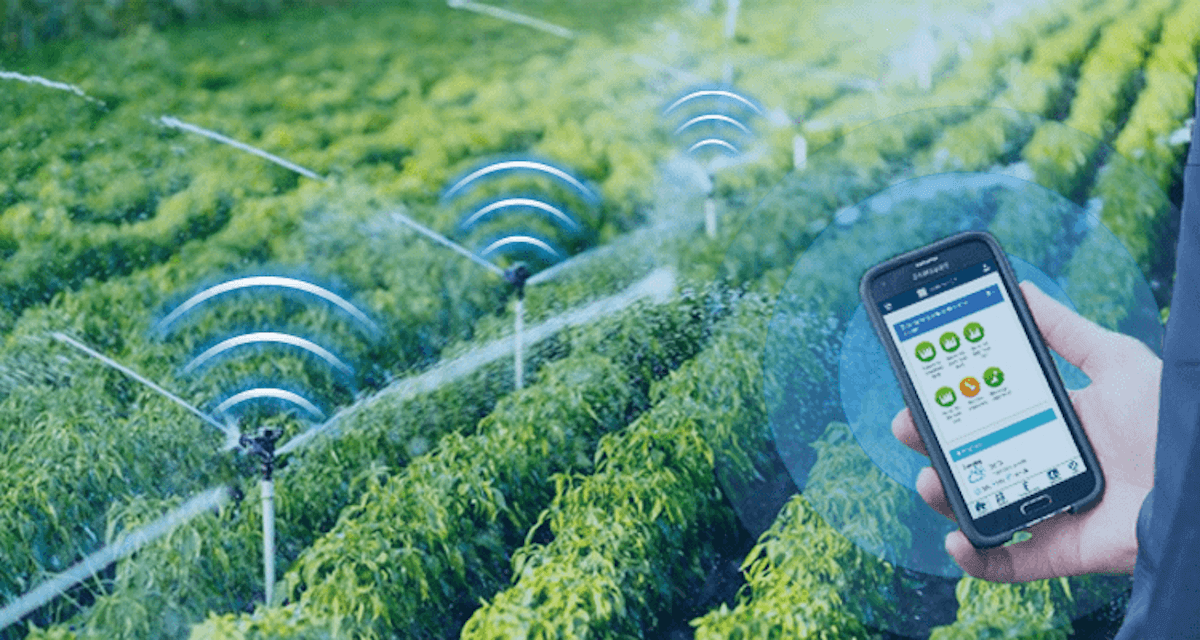As global water scarcity becomes an increasingly critical issue and agricultural demand continues to grow, the need for intelligent and efficient water management systems is more urgent than ever. The smart irrigation market is emerging as a key solution, offering advanced technologies that optimize water use, reduce waste, and boost crop yields.

Smart irrigation refers to systems that use technology such as sensors, weather data, and automation to determine when and how much water to apply to crops or landscapes. Unlike traditional irrigation methods, which often operate on fixed schedules regardless of real-time conditions, smart systems adapt dynamically, delivering water only when and where it's needed.
Why the Smart Irrigation Market Is Booming
Several factors are fueling the rapid expansion of the smart irrigation market. From climate change to technological advancements, the landscape of agriculture and water management is evolving:
1. Rising Water Scarcity
Water scarcity affects over 2 billion people globally, and agriculture accounts for nearly 70% of global freshwater withdrawals. Smart irrigation systems are designed to use data-driven decisions to reduce unnecessary water usage, making them an attractive solution for sustainable farming.
2. Global Push for Sustainable Agriculture
Governments and international organizations are encouraging the adoption of environmentally sustainable practices. Subsidies, grants, and policy support have increased the adoption of smart irrigation technologies in both developed and developing countries.
3. Integration of IoT and AI in Agriculture
Technologies such as the Internet of Things (IoT), artificial intelligence (AI), and cloud computing have enabled precise monitoring and real-time decision-making. Smart irrigation systems now often come equipped with soil moisture sensors, climate monitoring tools, and mobile app connectivity to streamline irrigation processes.
4. Labor Shortages in Agriculture
With declining agricultural labor availability in many regions, automated irrigation systems provide an efficient and labor-saving alternative. Smart systems reduce the need for manual intervention, saving time and operational costs.
Key Components of the Smart Irrigation Market
The smart irrigation market comprises various products and technologies designed to monitor, control, and optimize water use:
Controllers: Programmable devices that automate irrigation based on data inputs.
Sensors: Measure soil moisture, temperature, humidity, and rainfall.
Flow Meters: Track water usage in real-time.
Sprinklers and Drip Emitters: Deliver water efficiently at targeted spots.
Software and Analytics Platforms: Offer insights, reports, and remote management capabilities.
These components are often integrated into a unified system to provide end-to-end smart irrigation solutions.
Applications Across Sectors
Though most prominent in agriculture, the smart irrigation market also has a growing presence in other sectors:
Residential: Homeowners use smart irrigation to manage lawn and garden watering efficiently.
Commercial: Businesses, parks, and golf courses employ smart systems to maintain landscapes sustainably.
Municipal: Cities deploy smart irrigation for public spaces, reducing costs and conserving water.
In agriculture specifically, these systems are used for row crops, orchards, vineyards, greenhouses, and more, depending on the crop type and regional climate conditions.
Regional Outlook and Market Trends
The smart irrigation market is expanding globally, with significant activity in the following regions:
North America: Leads in market share due to early adoption, technological infrastructure, and supportive policies.
Europe: Emphasizes sustainability and water conservation, driving demand.
Asia-Pacific: Witnessing rapid growth, particularly in India, China, and Australia, due to agricultural dependency and growing water stress.
Latin America and Africa: Gaining traction with international development projects and awareness campaigns.
Emerging trends include the integration of satellite imagery with irrigation analytics, use of AI for predictive watering schedules, and mobile apps that offer granular control of irrigation settings from anywhere.
Challenges in the Smart Irrigation Market
Despite its potential, the smart irrigation market faces several challenges:
High Initial Costs: Advanced systems and installation can be expensive, especially for small-scale farmers.
Lack of Awareness: In many regions, the benefits of smart irrigation are not widely known.
Technical Complexity: Requires digital literacy and training for effective use.
Connectivity Issues: Remote agricultural areas may lack reliable internet or cellular coverage needed for real-time data transmission.
To overcome these hurdles, collaboration among governments, tech providers, and agricultural communities is essential.
Future Outlook
The smart irrigation market is poised for strong growth over the next decade. As climate change continues to impact global agriculture, efficient resource use will become a priority. Additionally, with the proliferation of precision agriculture and smart farming tools, smart irrigation will be a cornerstone of modern farm infrastructure.
In the broader ecosystem of agricultural technology, the evolution of related fields such as crop monitoring, soil health analysis, and even areas like the cyber insurance market are contributing to a more secure, efficient, and sustainable future for farming.
With advancements in machine learning and the falling cost of IoT components, smart irrigation systems will become more accessible and effective, making them a vital investment for the future of global agriculture.
Conclusion
The smart irrigation market is not just a response to environmental challenges but a proactive step toward building a sustainable future. With its ability to conserve water, reduce costs, and enhance agricultural productivity, smart irrigation is transforming how we manage one of our most precious resources.
From large-scale commercial farms to urban green spaces, the applications are vast and growing. The market will continue to innovate and expand, driven by technology, environmental necessity, and the global need for smarter, more responsible water management solutions.
Related Trending Reports
| Gaming Accessories Market |
| Fire Protection System Market |
| Sports Technology Market |
| Smart Building Market |
| Smart TV Market |